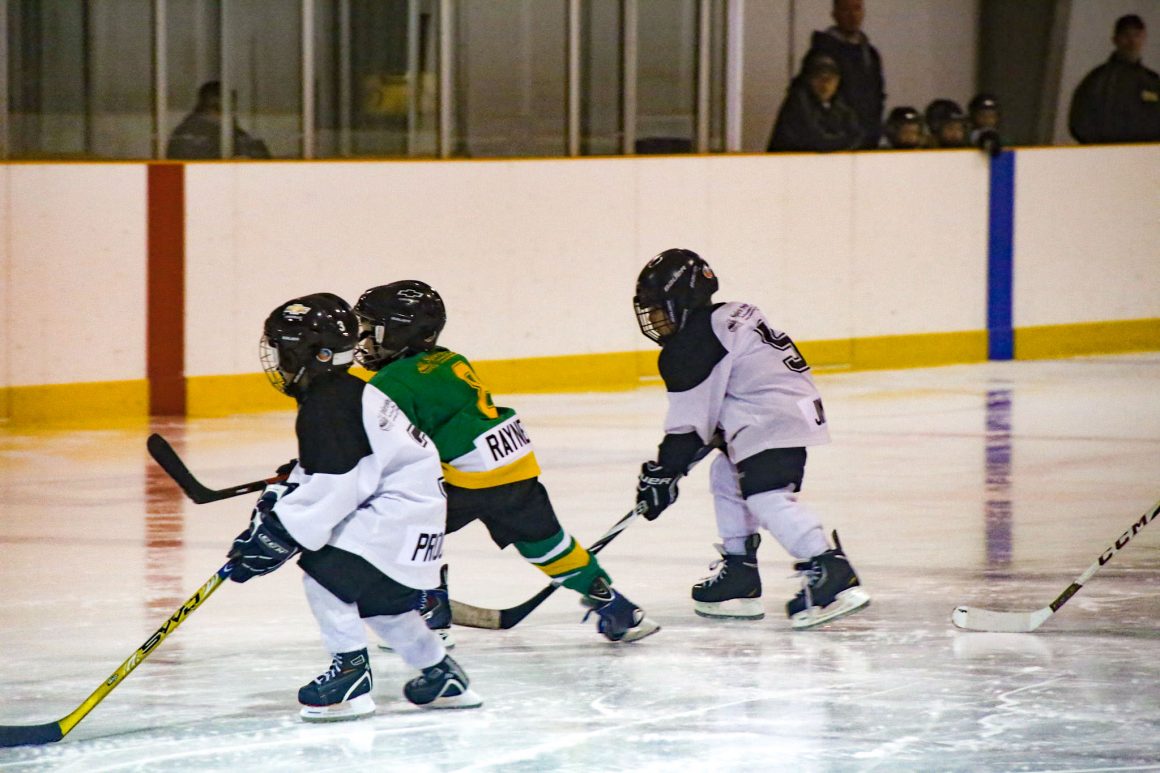
Reduced ice surface makes kids’ hockey more inclusive
By Emilie Medland-Marchen, March 28 2017 —
If you’ve ever watched a Timbits hockey game, you’ll know that it mostly consists of young kids chasing after a puck across a vast expanse of ice.
But that will soon change with Hockey Canada’s new regulation making it mandatory that kids get their first introduction to the sport playing on a cross-ice — or half-ice — decreased surface.
The new policy will take effect for the 2017–18 season. Hockey Canada has recommended a decreased ice surface for players five-to-six years old for nearly three decades, but it has yet to be permanently implemented. Despite this, a number of amateur hockey associations across the country already require ice surfaces to be broken up into smaller parts for their youngest players.
But some parents have expressed their concern that a decreased ice surface does more harm than good. Some claim that their children are ready to play on a full ice surface and that a smaller game holds them back. The Saskatchewan Hockey Association mandated smaller ice surfaces for its younger players in the 2016–17 season, but acknowledges on their website that some parents may want full ice so their children can “play like professionals”.
It’s fine for parents to want their kids to play to their full potential. But very rarely are five or six year-old children developed enough to play a fruitful hockey game on a professional-sized ice surface.
Rather than allowing for kids to learn about technical aspects of the game like icing and offside, the game resorts to stronger kids skating away with the puck and leaving others far behind. There’s no room to develop stickhandling and teamwork skills when kids are forced to skate across a full-ice surface.
While a full surface might help to develop cardiovascular skills, it creates an unfair advantage for children at a higher development stage than others. At the ages of five and six, even a year of physical development can make a huge difference in speed and skill.
Hockey Canada has branded the change with a catchy phrase “decrease the space, increase the pace.” With professional hockey becoming an increasingly fast game that focuses on skill and finesse rather than brute strength, it’s essential that children get a handle on the technical aspects of hockey before they play on a full-ice surface. Passing, stickhandling and teamwork skills can be better developed on a smaller ice surface when everyone gets more time to touch the puck.
While a full-ice surface can improve skating skills, this can also be done in a more effective way that benefits every child — rather than rewarding those that are farther ahead on the developmental curve. At such a young age, stopping and starting, skating lines and practising tight turns can all be achieved using lines found on half of the ice’s surface.
While parents might feel that their children aren’t getting the “professional experience” of hockey, kids’ sports is no place for helicopter parenting. At such a young age, playing hockey should be about learning skills in a fun environment.
A decreased ice surface makes the game more inclusive for everyone involved — and for Canada’s most beloved game, that should be the most important thing.
